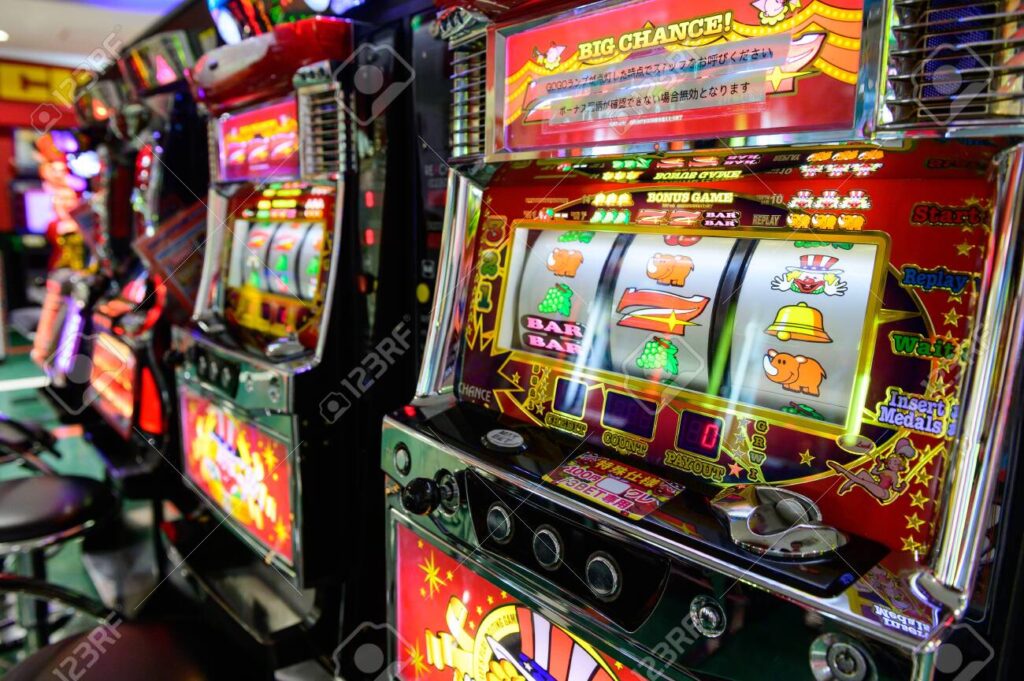Pachinko is a Japanese mechanical game that is used as a recreational arcade game as well as a gambling device, filling a niche in Japanese gambling that is comparable to that of the slot gacor machine in Western gambling. However, how is the Pachinko gambling Japan law?.
The History of Pachinko
The Corinth game, based on and named after the American «Corinthian bagatelle,» was first built in the 1920s as a children’s toy. Billard japonais, or ‘Japanese billiards,’ was invented in Western Europe in the 18th century and is another likely inspiration.
Around 1930, it became popular as an adult pastime in Nagoya, and it quickly spread throughout Japan. During World War II, all of Japan’s pachinko parlors were closed, but they reopened in the late 1940s.
Pachinko has remained popular since 1948, when Nagoya’s first commercial parlor opened. Taiwan, as a country influenced by Japan during its occupation, has a large number of pachinko parlors.
Approximately 80% of pachinko parlors in Japan are now owned by ethnic Koreans. Tokyo Plaza, which had nearly 20 parlors across Japan and had also opened parlors in the United Kingdom, was purchased by the British company BS Group in 2001.
Pachinko machines were mechanical devices until the 1980s, with bells to indicate different states of the machine. Electricity was only used to turn on lights and signal problems, such as a machine that had run out of balls.
Pachinko Gambling Japan Law
Pachinko parlors are common in Japan, and they usually include a number of slot machines (called pachislo or pachi slots), so they resemble casinos in appearance and operation. Both mechanical and digital components are used in modern pachinko machines.
Although gambling for money is illegal in Japan, the widespread popularity of low-stakes pachinko has created a legal loophole that allows it to exist.
Pachinko balls won in games cannot be directly exchanged for money in the parlor, nor can they be taken out of the premises or traded with other parlors.
Nonetheless, they can be legally traded to the parlor for a «special prize» and then legally «sold» to a separate vendor off-premises for cash.
These vendors (ostensibly independent from, but frequently owned by, the parlor owner) then sell the tokens back to the parlor for the same price they were purchased for (plus a small commission, resulting in a cash profit), without technically breaking the law.
The Design of Pachinko
The decorative mechanics, sound, gimmicks, modes, and gates of pachinko machines all differ. Since the front was covered onto them, the playing field is described as a wooden acrylic board.
The LCD screen is usually centered over the main start pocket on most modern machines. The game is played by keeping the ball stream to the left of the screen, but many models will have their own ball stream optimized.
The location and strategy of the pockets vary by vintage machine, with the majority having a specific centerpiece that usually contains win pockets.
The Payout Mode
If the first two numbers, letters, or symbols on the spin match, the digital program will display a series of animations before the third reel stops spinning, adding to the excitement of the game.
A reach (or rchi) is a type of animation, and super reaches are longer versions of reaches. Pachinko machines have widely different odds of hitting a jackpot; if a jackpot is won, the machine enters payout mode.
The payout mode is active for several rounds. During each round, a large payout gate appears at the bottom of the machine layout, and the player must try to shoot balls into it while more animations and movies play on the center screen.
Many balls are dropped into a separate tray at the bottom of the machine for each ball that successfully enters this gate, which can then be placed into a ball bucket.
In conclusion, the Pachinko gambling Japan law is legal now. You can play it if you are a foreigner who wants to gamble there.

